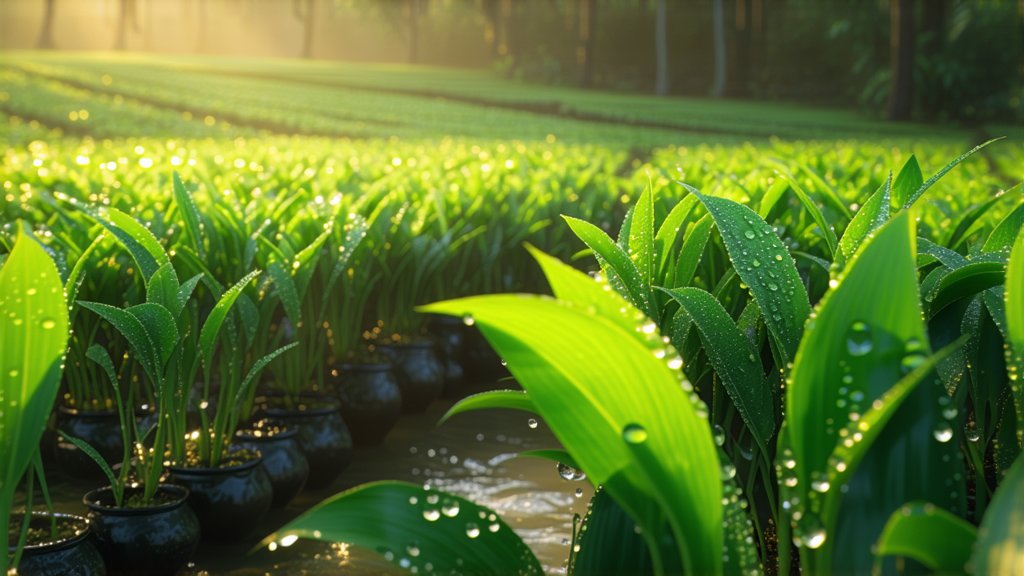
**
In the vast and diverse landscape of Chinese tea culture, few varieties capture the imagination quite like Baihao Yinzhen (白毫银针), a premium white tea that hails from the mountainous regions of Fujian Province. This exquisite tea, often referred to as the "Silver Needle," is not only a testament to China's rich tea heritage but also a symbol of purity, elegance, and unparalleled craftsmanship. For international readers seeking an in-depth exploration of this unique tea variety, this article will delve into its historical roots, classification, meticulous production process, and the art of its appreciation.
Historical Background
The origins of Baihao Yinzhen can be traced back to the early Qing Dynasty (1644–1912), with its name literally translating to "White Hair Silver Needle." It is said that this tea was initially discovered by chance when tea farmers noticed sprouts covered in fine, silvery down during the spring harvest. These buds were carefully handpicked and processed, resulting in a tea that exuded a unique aroma and taste unlike any other. Over time, Baihao Yinzhen gained popularity among the imperial court and became a highly prized commodity, symbolizing status and sophistication.
Classification and Varieties
Baihao Yinzhen falls under the broader category of white teas, which are characterized by their minimal processing and retention of natural properties. Within this category, it stands out for its use of only the youngest leaves and buds, typically harvested in early spring when they are most tender and rich in nutrients. There are two main types of Baihao Yinzhen:
- Yinzhen: Made solely from the plump, silvery buds before they unfold into leaves.
- Baimudan: Comprises both the bud and the first leaf, offering a slightly different flavor profile while still maintaining the characteristic qualities of white tea.
Both varieties share a common thread of delicacy and refinement, making them ideal choices for discerning tea connoisseurs seeking a pure expression of nature's bounty.
The Art of Crafting Baihao Yinzhen
The production of Baihao Yinzhen is a labor-intensive process that requires precision, patience, and a deep understanding of tea cultivation. Here's a glimpse into the intricate steps involved:
-
Harvesting: The finest Baihao Yinzhen is采摘d during a brief window in early spring, usually around Qingming Festival (Tomb Sweeping Day), when the tea plants produce their first flush of buds. Only the topmost, most pristine buds are selected, ensuring optimal freshness and quality.
-
Withering: Unlike other teas that undergo extensive rolling and firing, white teas like Baihao Yinzhen are simply spread out in a well-ventilated area to wither naturally. This gentle drying process allows the leaves to lose moisture slowly, preserving their natural enzymes and delicate flavors.
-
Drying: After withering, the tea undergoes a final drying phase, either through sun exposure or low-temperature ovens, to reduce moisture content further without compromising its inherent qualities. This step is crucial for stabilizing the tea and preventing spoilage.
-
Sorting and Packaging: Once dried, the tea is meticulously sorted to remove any imperfections or foreign matter. It is then packaged carefully to maintain freshness and protect against light, humidity, and odors until it reaches the consumer.
Appreciating Baihao Yinzhen: A Sensory Experience
To truly savor Baihao Yinzhen is to embark on a sensory journey that engages all five senses. Here's how you can fully appreciate this exceptional tea:
-
Visual Appreciation: Observe the dry leaves, which should appear as slender, needle-like buds covered in a fine layer of silvery fuzz. When steeped, they unfurl gracefully, revealing a pale yellow liquor that shimmers like liquid gold.
-
Aromatic Nuances: Bring the brewed tea close to your nose and inhale deeply. You'll detect subtle floral notes intertwined with hints of fresh grass and a whisper of sweetness, reminiscent of springtime in the mountains.
-
Tasting the Essence: Take a slow sip, allowing the tea to coat your palate. Baihao Yinzhen offers a delicate balance of sweetness and umami, with a silky texture that glides effortlessly across the tongue. Its flavor profile is nuanced, evolving with each sip to reveal layers of complexity.
-
Texture and Mouthfeel: Pay attention to the tea's mouthfeel—its velvety smoothness and几乎 imperceptible astringency contribute to a luxurious drinking experience that lingers long after the cup is empty.
-
Aftertaste and Finish: Notice the clean, refreshing aftertaste that persists, leaving a gentle imprint on your palate. This lingering sensation is a hallmark of high-quality Baihao Yinzhen, indicative of its purity and craftsmanship.
Health Benefits and Cultural Significance
Beyond its aesthetic and gustatory pleasures, Baihao Yinzhen is celebrated for its potential health benefits. Rich in antioxidants, amino acids, and polyphenols, it is believed to boost the immune system, promote cardiovascular health, and aid in weight management. Additionally, it contains lower levels of caffeine compared to other teas, making it a soothing choice for those sensitive to stimulants.
Culturally, Baihao Yinzhen embodies the philosophy of yin and yang—harmony between opposites. Its minimal processing represents a return to nature, reflecting the Daoist principle of living in accordance with the Tao, or the natural way. As such, it serves as a reminder of the importance of balance, tranquility in our fast-paced modern lives.
In conclusion, Baihao Yinzhen is more than just a tea; it is an embodiment of China's ancient wisdom, a celebration of nature's gifts, and a testament to human ingenuity. For those who seek solace in a cup, Baihao Yinzhen offers a gateway to a world where simplicity meets sophistication, where every sip tells a story of tradition, terroir, and timeless elegance.